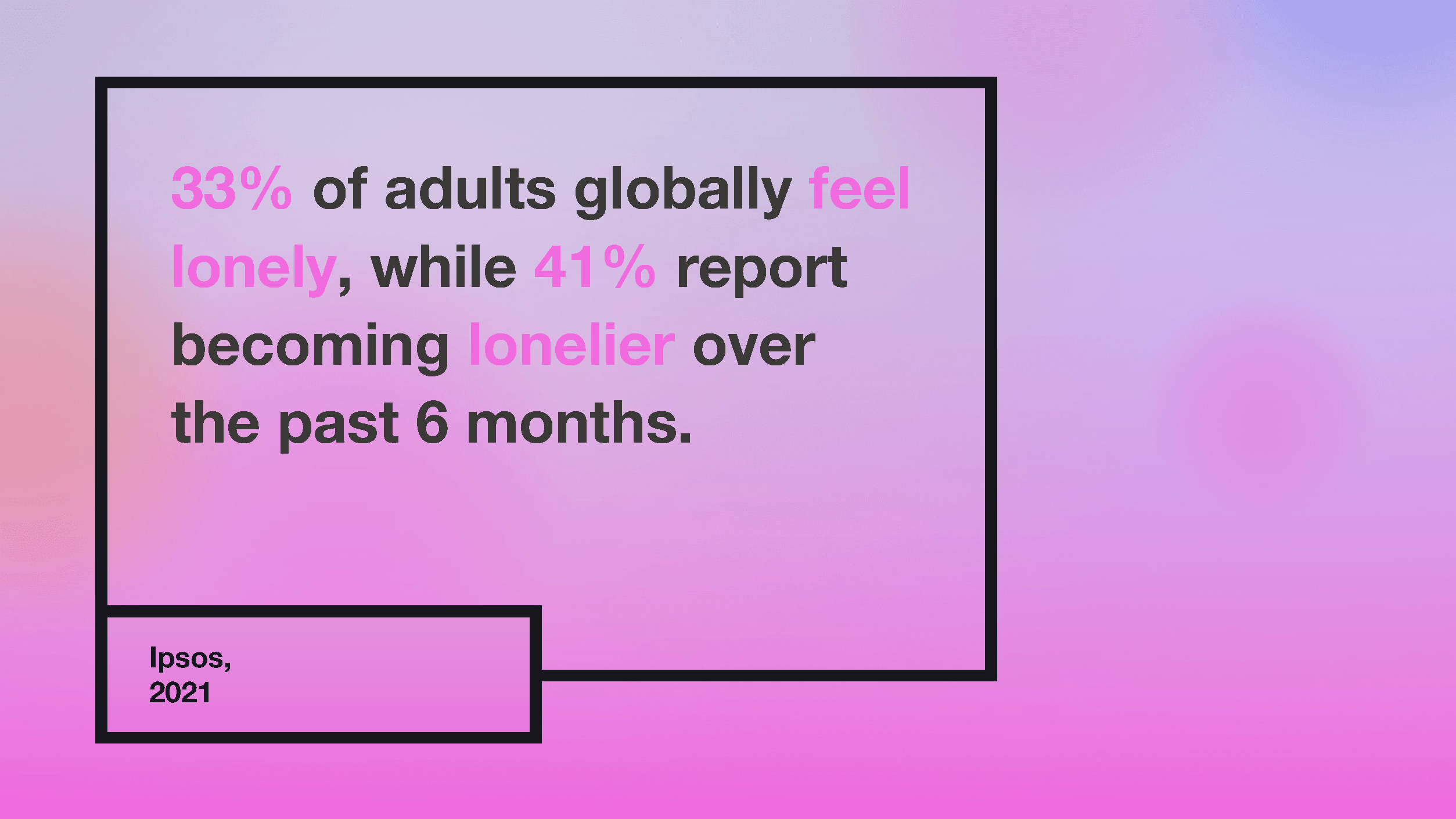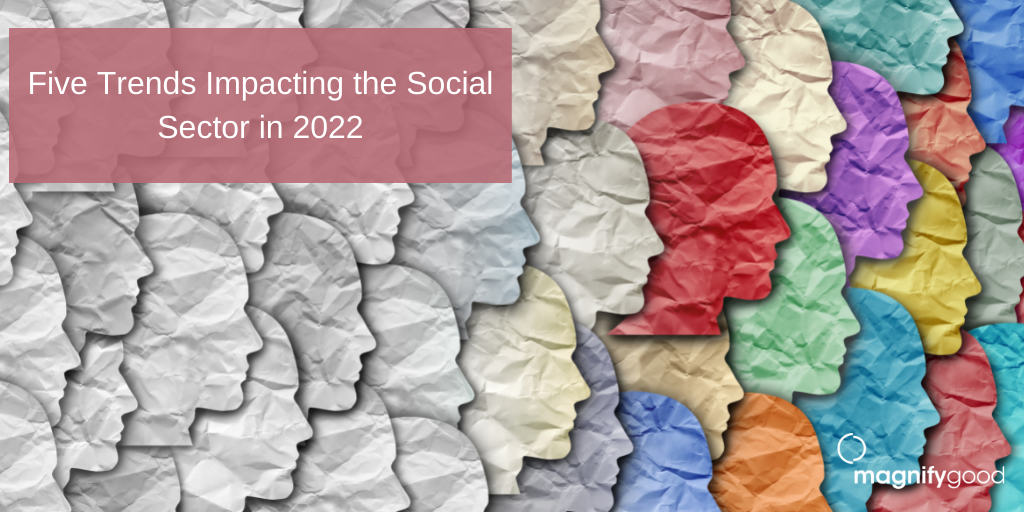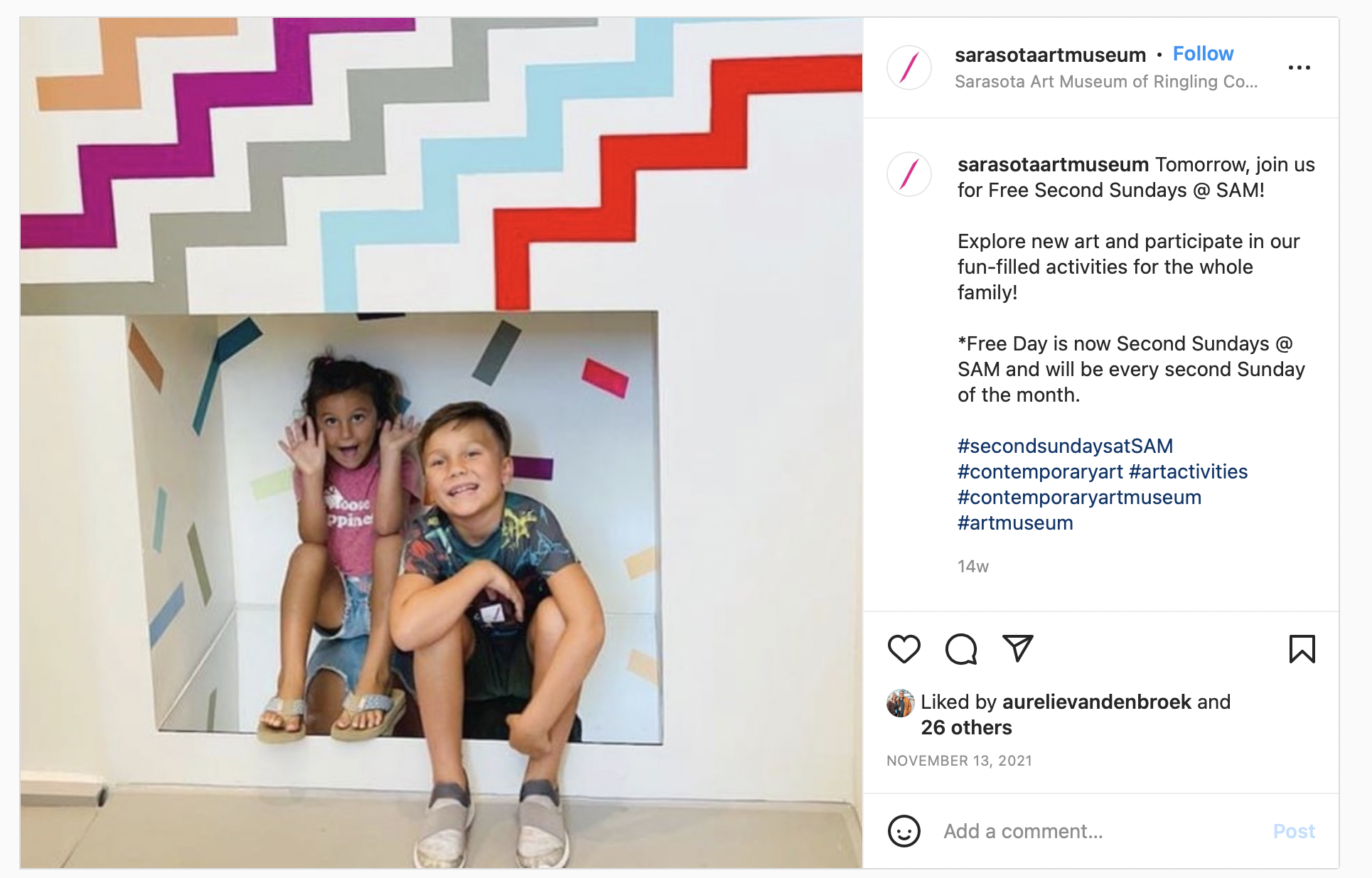At MagnifyGood, we are a forward-thinking agency that is always seeking ways to translate for-profit trends and innovations to the philanthropic sector. We recently joined the TrendWatching 22 Trends for 2022 webinar and have highlighted five trends that will impact how nonprofit organizations connect with people.
The pandemic continues to impact how and where people engage with their local communities. A recent Trendwatching report “22 Consumer Trend Opportunities for 2022” indicates an ever-growing desire to be conscious and intentionally make choices and engage in activities that drive positive social change. Nonprofit organizations and foundations are perfectly positioned to step in and provide solutions, experiences, and connections that their audiences, constituents, and donors are craving.
Here are the five trends for 2022 to reflect on as a nonprofit leader.
1. Freedonism
Fun as the ultimate fear antidote.
The last several years have been just a little intense. The collective stressors placed on our society from the ongoing COVID-19 pandemic are impacting every individual in small and big ways. In response to this global sense of anxiety, people are seeking fun and playful experiences. A study conducted by Momentum Worldwide on consumer behavior in relation to brands found that 58% of respondents want to be part of an experience to escape from everyday life, while 70% want an experience where they can laugh and have fun. How can the philanthropic sector respond to this desire? By finding opportunities to create joy that connect with their mission.
Second Sundays at Sarasota Art Museum are a free monthly event designed to provide greater access to the arts for the Sarasota community through fun, engaging programming such as storytelling performances, dance, music, intergenerational art activities, and an open studio. This event not only opens up the space of SAM to the community with exciting and fun activities, it also offers opportunities for all ages and interests to engage in the arts.
This focus on fun can also translate to an organization’s communications and donor outreach. Apply this trend to how you approach prospective donors by changing up the ask. Instead of garnering attention via sadness or fear, focus on positive emotions. Emotions are drivers of change, so look for ways to surface and elevate joyful stories about your work and impact.
2. Joining
Finding meaningful connections in a lonely world

Credit: Trendwatching
People are feeling lonelier than ever as the pandemic continues on and isolation persists. 33% of adults globally feel lonely, while 41% report becoming lonelier over the past 6 months. Loneliness and social anxiety were on the rise even before COVID lockdowns, in part due to our increasingly digital lives and a decline in offline interactions. In response, people are seeking ways to connect with others in meaningful ways.
Humans are designed to need and cultivate tribes and social groups. Nonprofits can foster sincere and meaningful connections with their communities, both in person and through digital platforms. March for Science evolved a Facebook group that was set up to organize rallies and marches for Earth Day 2017 into a community that offered connection, solace, resources, and solidarity to over 600,000 members as our world was transformed by a global pandemic and public health measures became politicized. How can your organization foster community through shared experiences?
3. Solace as a Service
Emergence of conscious convenience
Our lives are busier than ever, and people want efficiency in every aspect of their lives, from ordering groceries online to filing your taxes, all without ever leaving your couch. However, on-demand-everything comes with environmental and social costs. There is a growing tension between the need for ease and the desire to be conscious of impact. Nonprofits can help alleviate the friction by finding opportunities to help individuals make their lives easier while making the world a better place.
Streamlining donor communications by segmenting your audiences and using data to adjust outreach is both an effective way to engage supporters with relevant, personalized information that drives action and a way to minimize waste.
Now is the time to ask the question: is your organization sustainable? In what ways can you minimize your impact on the planet while also making things more convenient for your donors, volunteers, staff, and beneficiaries?
4. State of Place
Seeking to reclaim their community
62% of people globally trust the people in their local community over CEOs and government leaders. We may be a global society with access to information at our fingertips at all times, but home is still where the heart is. People want to feel connected to their local communities and support businesses and causes that are rooted in and show care to where they live.
For foundations and nonprofit organizations, this presents a tremendous opportunity to use communications to showcase their local connection. Find compelling ways to convey your local impact. Throughout the holiday season, the Community Foundation of Sarasota positioned the stories behind Season of Sharing recipients and their local connections in media.
How can your organization facilitate community connections? Another way social good organizations can leverage this trend is by elevating local voices and leaders to connect with their communities. The Patterson Foundation facilitates community conversations, bringing together community leaders and members to discuss their thoughts, aspirations, and goals around a variety of issues impacting our local community. Many nonprofit organizations are uniquely positioned to empower local changemakers and drive initiatives that bridge the trust gap between institutions and audiences.
5. Metaverse
An evolved internet
Feel like you’ve finally got a handle on Facebook? Well get ready to go Meta. Whether you’re a Metaverse believer or not, the next stage of the internet is here. Over the past two years, digital use has skyrocketed. With 66% of people preferring to interact with organizations online & 81% believing online presence is as important as in-person, how your organization engages with its audience online is critically important.
The digital face of your organization is likely the first touch point between you and your donors, volunteers, future employees, and everyone in between. How do you create an experience for your audiences digitally that illustrates your value? Through virtual reality (VR) and augmented reality (AR) technology, you can immerse people in your areas of impact to help them better connect with and understand your mission. Virtual reality can help make people feel more compassionate than other media, according to a study conducted by Stanford University. The study used a Stanford-developed virtual reality experience, called “Becoming Homeless” that took users through the steps and experiences leading to homelessness. These tools can also be used to transform services and programs —The Tidewell Foundation uses VR to help hospice patients connect with loved ones and create powerful, new joyful experiences.
There are many opportunities to explore and implement this trend, but the question to ask now in your organization is what will your legacy be in this digital future?
Trends: TrendWatch
You can also take a look back at what we predicted for 2021.
As a social sector communications agency, MagnifyGood specializes in elevating the marketing, PR, branding, advertising, and social media of nonprofits, foundations, and other mission-driven organizations. Looking to enhance your donor engagement, create compelling impact stories, establish a brand that aligns with your mission, or explore innovative strategies to connect with your community? Contact us here. Let’s magnify good together.




